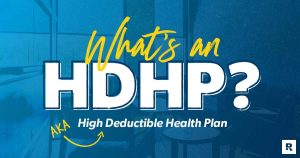MoMo Productions/GettyImages; Illustration by Hunter Newton/Bankrate
Our writers and editors used an in-house natural language generation platform to assist with portions of this article, allowing them to focus on adding information that is uniquely helpful. The article was reviewed, fact-checked and edited by our editorial staff prior to publication.
Key takeaways
- If you’re behind on mortgage payments and need help, there are several options available.
- Depending on the specifics of your situation, your options may include forbearance, loan modification or a repayment plan.
- Alternatively, you might consider refinancing, reducing your expenses or applying for assistance funds.
Life happens. If you’re struggling to afford your mortgage or behind on payments and need help, be proactive now with these options.
How to catch up on mortgage payments
Whether you’ve fallen behind on mortgage payments due to a recent job loss, unexpected expenses or another type of financial hardship, it’s important to understand your options for getting back on your feet. While missing mortgage payments can be intimidating, the best way to improve the situation is by being proactive about it.
So, what could be a good option available to you if you are behind on loan payments? Here are six potential ways to catch up:
1. Forbearance
Mortgage forbearance is a type of payment relief that temporarily suspends or reduces your payments for a set period. During this period, the record reflects that you’re current on your mortgage.
Once the forbearance period ends, you’ll repay the paused payments with a lump sum or through installments. If it’s the latter, you might repay these installments when you resume monthly payments. Or, your lender or servicer will tack the installments on to the end of your loan term, extending it by up to a year.
2. Loan modification
A loan modification permanently changes the interest rate, term or both on your mortgage. This option is best for borrowers who know they won’t be able to afford their current monthly payment due to a major financial hardship, such as:
- Long-term disability or illness that prevents you from working
- Death of a family member who had been earning an income for the household
- Divorce
- Significant spikes in property taxes or other housing costs
- Natural disaster
To qualify for a loan modification, borrowers must provide proof of financial hardship. This typically includes providing documentation of your income and expenses. Income documentation could include pay stubs, tax returns or bank statements. You may also be required to provide copies of bills and other expenses, such as medical expenses.
If your mortgage is backed by Fannie Mae or Freddie Mac you may be eligible for a program known as the Flex Modification program. This program was created to help homeowners who are behind on mortgage payments stay in their homes. The Flex Modification program targets homeowners who are experiencing hardship that has caused either a permanent or long-term decrease in income or a significant spike in expenses.
Though not incredibly common, you could also modify your loan through a principal reduction — if your mortgage servicer is willing to do it. This cuts down your outstanding balance, which would lower your monthly payments.
3. Repayment plan
While not the easiest route, you might be able to set up a simple repayment plan with your servicer, especially if you’ve gotten back on your feet financially.
However, you’ll have to convince your servicer that your financial situation has improved and that you can handle the additional cost month to month.
A housing counselor can help you communicate with your servicer and understand your options. You can find a counselor in your area using the U.S. Department of Housing and Urban Development’s online lookup tool, or by calling 800-569-4287.
4. Refinance
A mortgage refinance might be for you if you’re ready to restart your payments, you plan to stay in your home for a while and prevailing interest rates have come down since you got your loan.
That last part is especially important: If rates are higher now, it might not make sense to refinance to a new loan. Keep in mind that — unlike a loan modification — you’ll also need to pay closing costs to refinance.
You can check current refinance rates on Bankrate and estimate what a refinance would cost you with our refinance calculator.
5. Lower recurring expenses
If you can handle your principal and interest payment but your homeowners insurance premiums, property taxes or other expenses have become unmanageable, it’s time to revisit those costs. Here are some solutions to explore:
- Homeowners insurance: Shop around for comparable coverage at a better price. You can compare insurance quotes on Bankrate.
- Property taxes: You might be eligible for a property tax abatement, especially if you’re a senior. Visit your state’s website to learn more.
- HOA dues: If your home is in a homeowners association and you’ve fallen behind on HOA fees, contact the HOA as soon as possible. You might be able to work out a payment plan.
6. Assistance funds
Check your state, county, city and any professional organizations to see if you are eligible for any assistance programs. The Homeowner Assistance Fund (HAF), for example, was established to help homeowners who fell behind on mortgage payments or other housing expenses due to the COVID-19 pandemic. While the program is now closed in many parts of the country, it continues to help those struggling to make mortgage payments in some states.
The Homeowner Assistance Fund is set to end September 2026 or when program funding runs out, whichever event occurs first, according to the Consumer Financial Protection Bureau.
Read the full article here










